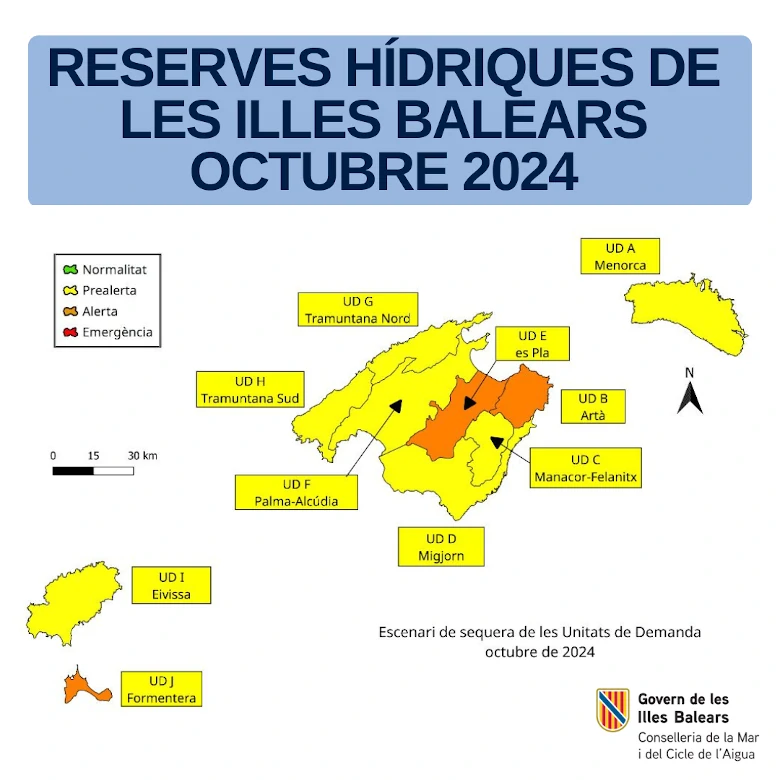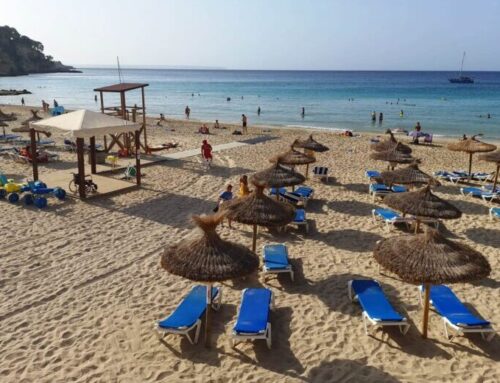Water reserves in the Balearic Islands remain at 46% in October, a stable level compared to the previous month, but reflecting a significant decrease from October 2023, when reserves were at 54%. This year-on-year drop highlights the importance of sustainable water resource management. Although water reserves are expected to increase in November with anticipated rainfall, no changes in alert and pre-alert levels across the different demand units are anticipated.

Source: CAIB.
Despite the general trend, local variations have been observed. Notably, the recovery of the Migjorn Demand Unit (DU), which has returned to a normal state, is a key development, as this has not occurred since 2023. Currently, 15.1% of the territory (the Migjorn DU) is in normal state, while 67.1% (including Menorca, Manacor-Felanitx, Palma-Alcúdia, Tramuntana Norte, Tramuntana Sur, and Ibiza) remains on pre-alert, and 17.8% (Es Pla, Artà, and Formentera) remains on alert.
Evolution of reserves by demand units
In terms of the evolution of reserves by demand units, four units have recorded a decrease: Es Pla, Palma-Alcúdia, Tramuntana Norte, and Tramuntana Sur; while four others have shown a slight increase: Menorca, Manacor-Felanitx, Migjorn, and Formentera. The Artà and Ibiza DUs remain stable. The overall demarcation index has slightly risen to 0.367, but it remains below last October’s value (0.447) and that of two years ago (0.428).
At the island level, Mallorca maintains a reserve level of 47%, Menorca registers a slight increase from 44% to 45%, and Ibiza experiences a decrease from 33% to 32%. Overall, water conditions in the Balearic Islands are less favourable than a year ago.
A wet October
According to AEMET data, October was wet across the Balearic Islands, with an average of 84.1 l/m², above the usual 72.6 l/m². Mallorca experienced a wet month with 96.8 l/m² compared to the usual 77.1 l/m²; Menorca maintained its usual levels with 62.7 l/m² compared to 62.9 l/m²; while Ibiza and Formentera had a dry month, with only 30.9 l/m² and 22.0 l/m² respectively, both below their averages.
For the year so far, cumulative rainfall across the Balearics stands at 85% of the historical average, with Mallorca at 86%, Menorca at 95%, and the Pitiusas at 62%. October was also exceptionally warm, with an average temperature of 20.4°C, exceeding the historical average by 1.6°C.







Leave A Comment